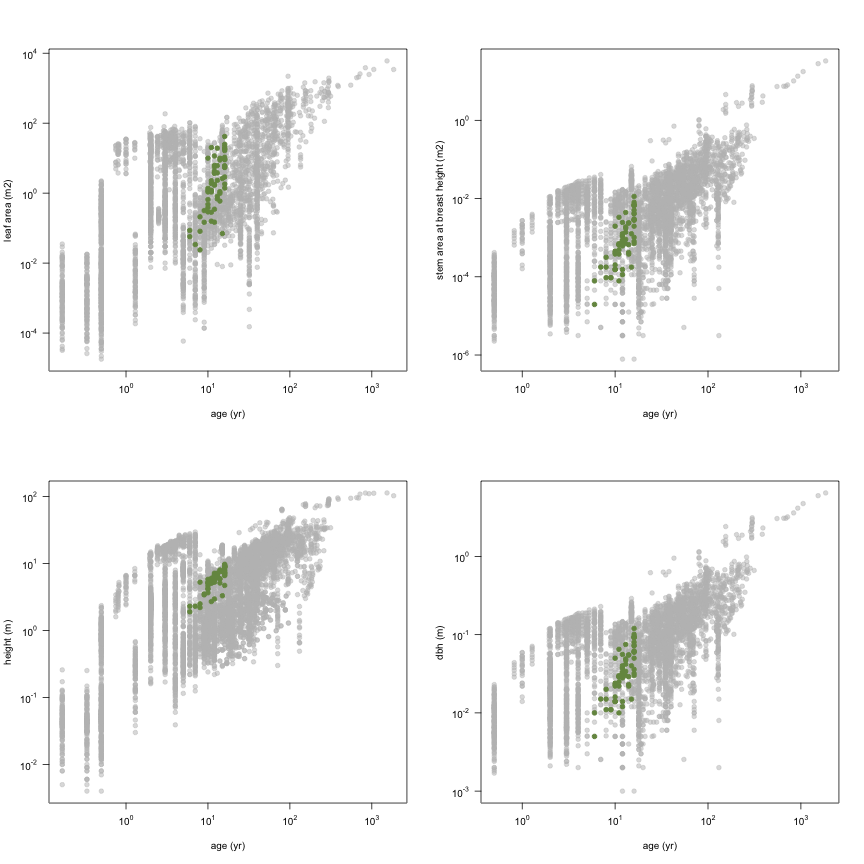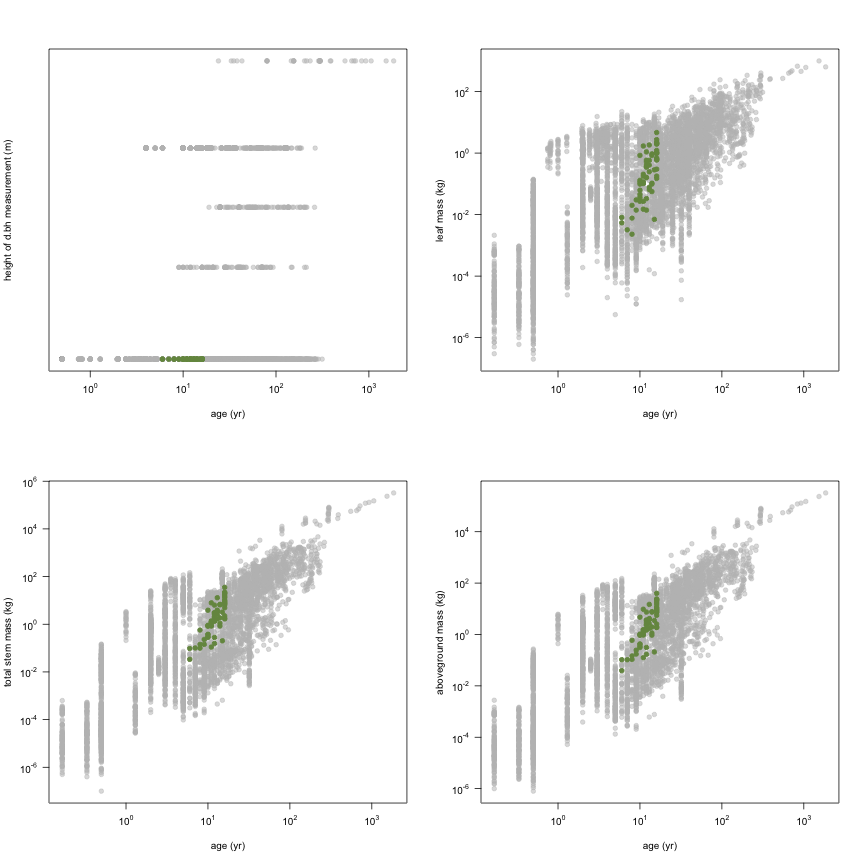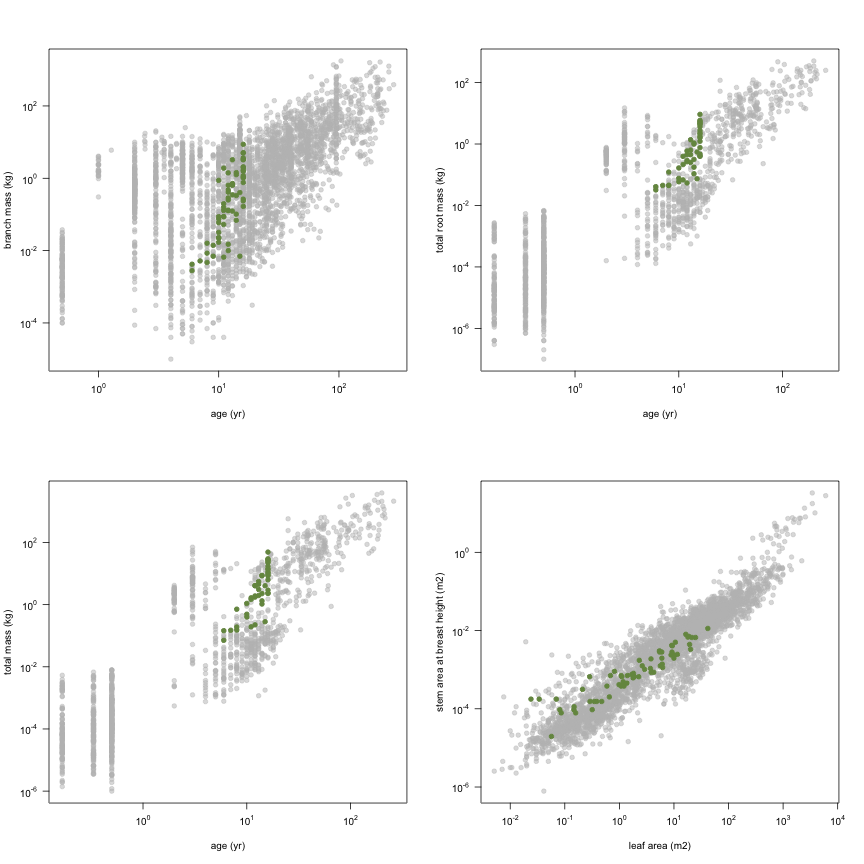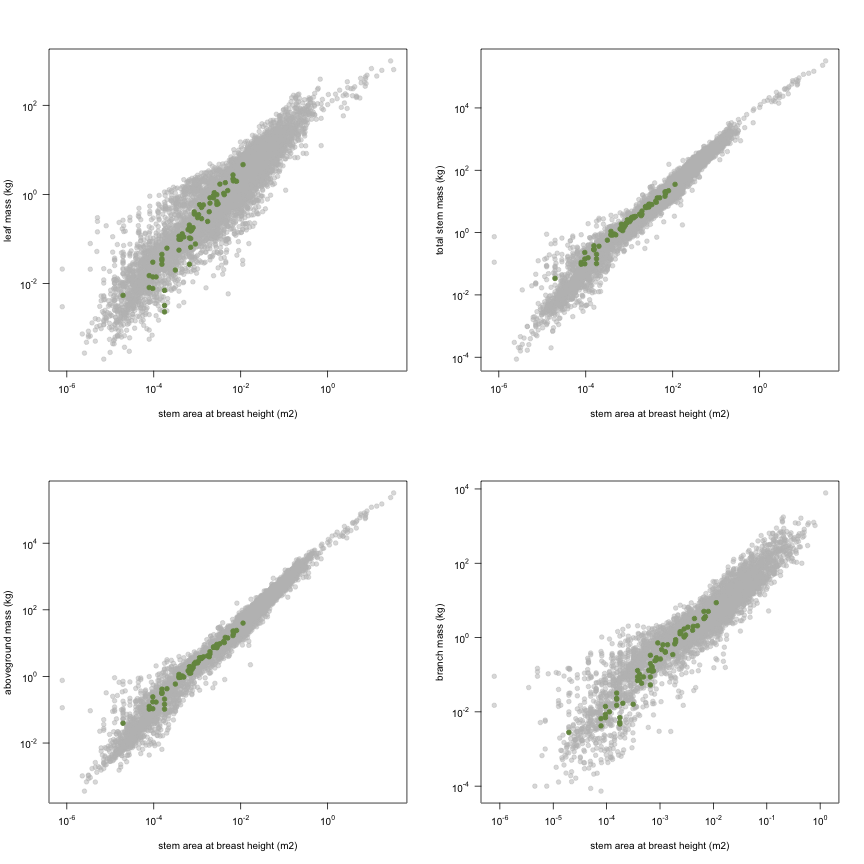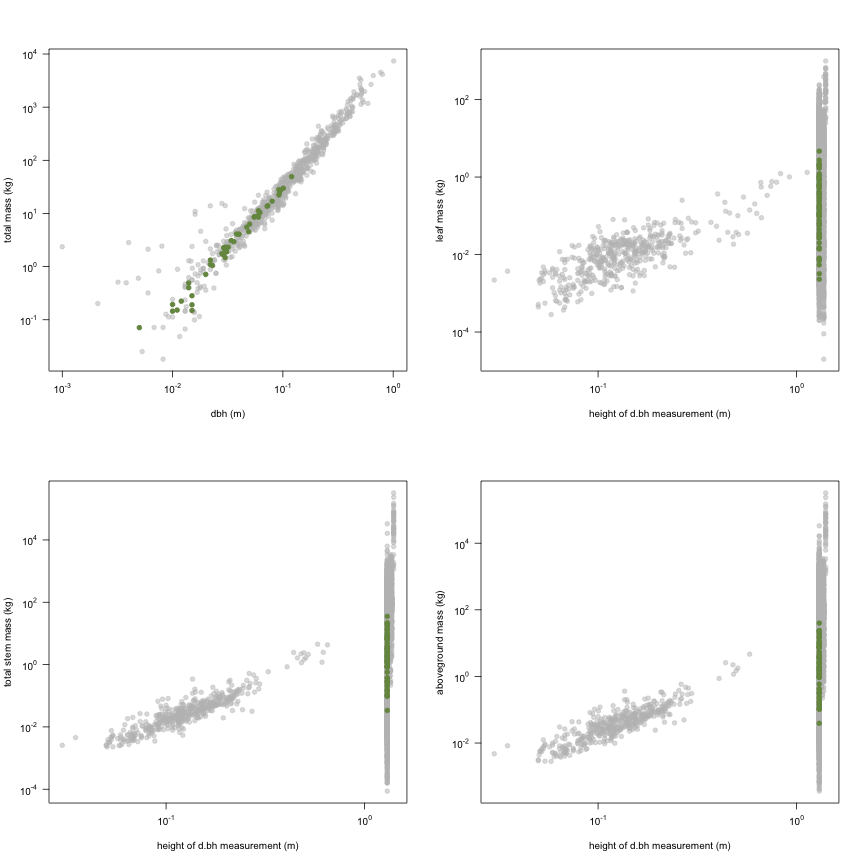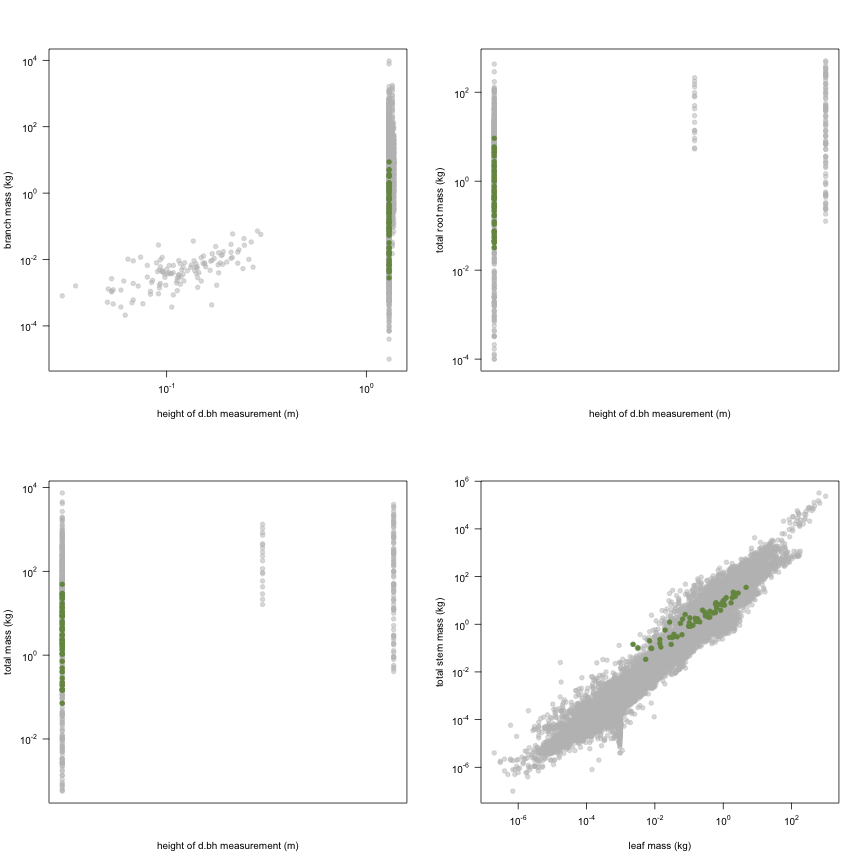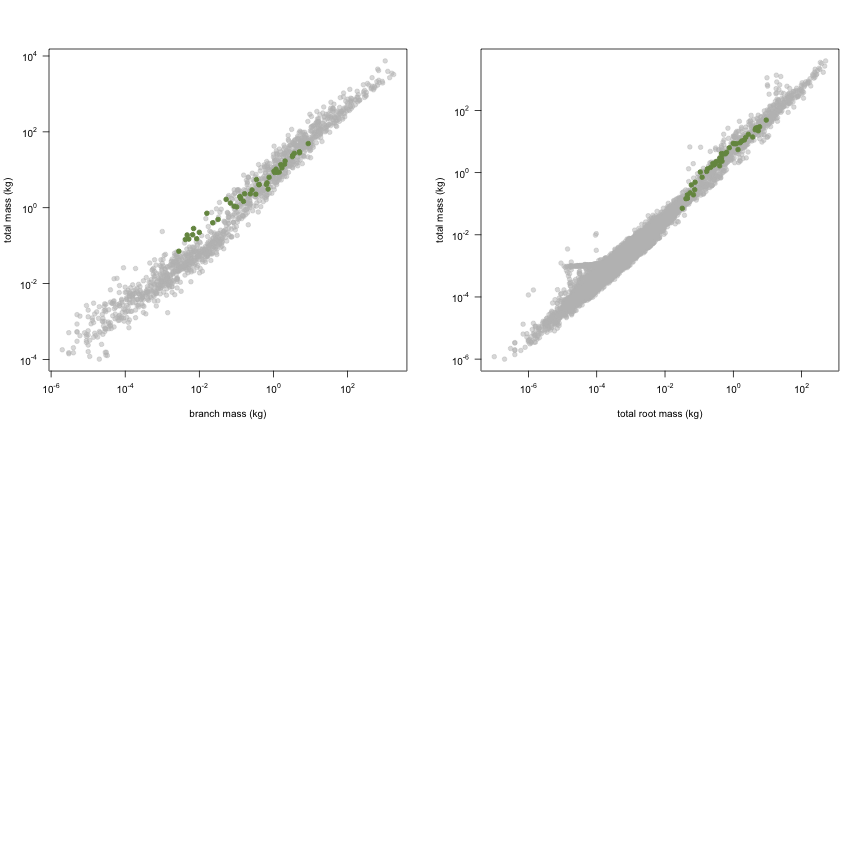-
Notifications
You must be signed in to change notification settings - Fork 19
Tadaki1995
Data contributor: Masae I. Ishihara, Hajime Utsugi, Hiroyuki Tanouchi, Tsutom Hiura
Email: [email protected]
Address:
- Graduate School for International Development and Cooperation, Hiroshima University, 1-5-1 Kagamiyama, Higashi-Hiroshima 739-8529, Japan
- Forestry and Forest Products Research Institute (FFPRI), 1 Matsunosato, Tsukuba, Ibaraki, 305-8687, Japan
- Hokkaido Research Center, Forestry and Forest Products Research Institute (FFPRI), Hitsujigaoka-7, Toyohira, Sapporo, Hokkaido, 062-8516, Japan
- Tomakomai Research Station, Field Science Center for Northern Biosphere, Hokkaido University, Takaoka, Tomakomai 053-0035, Japan
Citation: Tadaki Y (1995). 'Structure and productivity of young Castanopsis cuspidata forests growing in different stand densities.' Bulletin of the Nagoya University Forest, 14, pp. 1-24.
DOI:
Abstract:
The dataset includes records for 64 individuals from 1 species belonging to 1 family(ies), presenting 1 functional type(s), growing in 1 condition(s) within 1 major type(s) of habitat, with data included for the following variables:
| Variable | Label | Units | N | Min | Median | Max |
|---|---|---|---|---|---|---|
| latitude | Latitude | deg | 64 | 33 | 33 | 33 |
| longitude | Longitude | deg | 64 | 131 | 131 | 131 |
| age | Age | yr | 64 | 6 | 12 | 16 |
| a.lf | Leaf area | m2 | 64 | 0.024 | 1.8 | 42 |
| a.stbh | Stem area at breast height | m2 | 64 | 0.00002 | 0.00078 | 0.011 |
| h.t | Height | m | 64 | 1.9 | 5.9 | 9.7 |
| d.bh | Dbh | m | 64 | 0.005 | 0.032 | 0.12 |
| h.bh | Height of d.bh measurement | m | 64 | 1.3 | 1.3 | 1.3 |
| m.lf | Leaf mass | kg | 64 | 0.0023 | 0.18 | 4.7 |
| m.st | Total stem mass | kg | 64 | 0.034 | 1.8 | 35 |
| m.so | Aboveground mass | kg | 64 | 0.039 | 1.9 | 40 |
| m.br | Branch mass | kg | 64 | 0.0028 | 0.24 | 8.7 |
| m.rt | Total root mass | kg | 45 | 0.032 | 0.45 | 9.2 |
| m.to | Total mass | kg | 45 | 0.071 | 2.9 | 49 |

And locally within the country:

The sites sampled are:
| Location | Longitude | Latitude | Vegetation |
|---|---|---|---|
| Japan-Kyushu Research Center, FFPRI. Compartment no. 9.-Adjacent | 130.73 | 32.82 | Temperate forest |
| Japan-Kyushu Research Center, FFPRI. Compartment no. 9.-Plot 2 | 130.73 | 32.82 | Temperate forest |
| Japan-Kyushu Research Center, FFPRI. Compartment no. 9.-Plot 4 | 130.73 | 32.82 | Temperate forest |
| Japan-Kyushu Research Center, FFPRI. Compartment no. 9.-Plot 6 | 130.73 | 32.82 | Temperate forest |
| Japan-Kyushu Research Center, FFPRI. Compartment no. 9.-Plot 8 | 130.73 | 32.82 | Temperate forest |
The growing conditions of sampled plants was:
| Location | growingCondition |
|---|---|
| Japan-Kyushu Research Center, FFPRI. Compartment no. 9.-Adjacent | field wild |
| Japan-Kyushu Research Center, FFPRI. Compartment no. 9.-Plot 2 | field wild |
| Japan-Kyushu Research Center, FFPRI. Compartment no. 9.-Plot 4 | field wild |
| Japan-Kyushu Research Center, FFPRI. Compartment no. 9.-Plot 6 | field wild |
| Japan-Kyushu Research Center, FFPRI. Compartment no. 9.-Plot 8 | field wild |
| Species | Family | Pft |
|---|---|---|
| Castanopsis cuspidata | Fagaceae | evergreen angiosperm |
Sampling strategy: Sampled stands were located in the compartment 9-i of the Kyushu Research Center, Forestry and Forest Products Research Institute (FFPRI), Kumamoto, Japan. The stands regenerated from sprouts and seeds after clear cutting in 1940-1950s, located on the middle of the slope (ca. 80 m a.s.l.), and was pure stands of Castanopsis cuspidata with a few Quercus glauca. Sampling was conducted in four plots (plot 2, 4, 6, 8) in December 1967, and in adjacent stands in November 1961, December 1963, November 1965. Trees in the plots were thinned in the spring of 1961 to the density of 4125 trees/ha for plot 2, 7500 for plot 4, 32100 for plot 6 and 18400 for plot 8. In four plots, trees were selected to cover size ranges. In adjacent stands, all trees within a defined area (5 or 15 square meter) and several large trees outside the area were cut down. After felling tree, tree height, height of the lowest living branch, and stem diameters at breast height were measured. Sample trees were then treated with the stratified clip technique by cutting them into parts contained in horizontal layers of 1 m depth and separated into stem, branches, and leaves. Roots were excavated. We only included data of single-stem trees for this data paper.
Leaf area: Total leaf area was estimated from fresh mass of leaves and leaf area/leaf mass ratios obtained from subsamples. For sampled trees from adjacent stands, average leaf area/leaf mass ratios was used for each sampling. For sampled trees from plots 2, 4, 6, and 8, leaf area/leaf mass ratios of each layer was used. Leaf area was measured by the dot-counting method proposed by Negishi et al. (1957, J. Jp. For. Soc. 39: 380-384) (Tadaki et al. 1962, J. Jp. For. Soc. 44: 350-359). Transpalent plate with marked dots at a certain interval such as every 1 cm was placed randomly on a leaf. Leaf area was estimated from the relationship between leaf area and the counted number of dots in the leaf.
Stem cross sectional area: Estimated from stem diameter.
Height: Measured after trees were felled.
Biomass: Measured fresh mass of each component was converted to dry mass from the ratio of dry to fresh mass. The ratio was estimated from a subsample taken for a componet at each sampling which were oven-dried at 80 degC (Tadaki 1968, J. Jp. For. Soc. 50: 60-65). Same ratio was used for trees sampled in the same year.
Other variables: M.I. Ishihara, H. Utsugi, H. Tanouchi, and T. Hiura conducted formal search of reference databases and digitized raw data from Tadaki (1995). Based on this reference and Tadaki (1962) and Tadaki et al. (1968), meta data was also created by M.I. Ishihara. Species name and family names were converted by M.I. Ishihara according to the following references: Satake Y, Hara H (1989a) Wild flower of Japan Woody plants I (in Japanese). Heibonsha, Tokyo; Satake Y, Hara H (1989b) Wild flower of Japan Woody plants II (in Japanese). Heibonsha, Tokyo.
This is how the study Tadaki1995 fits in the entire dataset (grey). each colour represents a species. A legend of species names with colours is included at the end for reports with 1 < n < 20 species.
